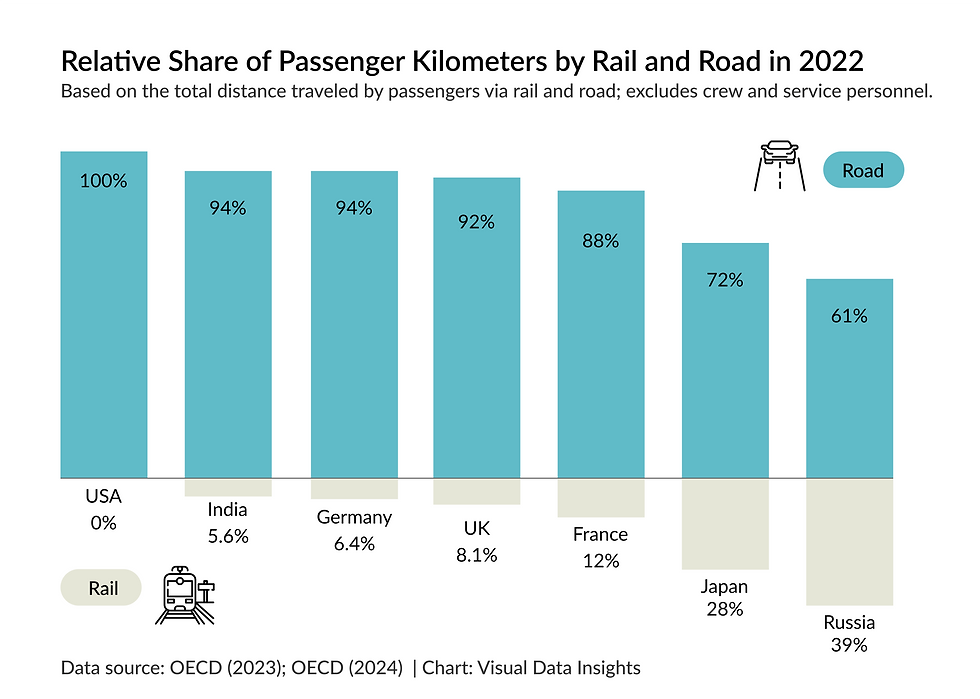🚗 Trains, Cars, and the Geography of Mobility: A Global Comparison
- Timothy Pesi
- Jun 20
- 2 min read
When it comes to moving people across vast distances, the world remains heavily tilted toward roads. But the degree to which countries rely on roads versus rails varies significantly—and tellingly—across economies.
Let's Explore this divide:
America’s Unyielding Romance with the Road
The United States stands alone in its near-total reliance on road travel. In 2022, 100% of passenger kilometers were traveled by road, effectively sidelining rail as a mode of personal transport. The vast interstate highway network, suburban sprawl, and entrenched car culture have long rendered passenger rail marginal. Despite investments in projects like Amtrak’s upgrades and California’s high-speed ambitions, rail remains a rounding error in American mobility.
🚄 Europe’s Partial Rail Renaissance
In contrast, European nations show a modest but notable embrace of rail. The United Kingdom saw 8.1% of its passenger kilometers on rail, followed closely by Germany at 6.4% and France at 12%. This reflects both denser urban environments and more robust rail infrastructure—particularly high-speed services like France’s TGV. Nonetheless, road remains dominant, accounting for 88–94% of passenger movement in these countries.
🌏 Asia’s Divergent Paths: Japan and India
Asia paints a more varied picture. Japan—home to the world’s first and most celebrated high-speed rail system—still sees 72% of its passenger kilometers by road. This may surprise some, but it reflects a broad suburban automobile ownership and limitations in last-mile connectivity. Meanwhile, India, despite a vast rail network, moves 94% of its passenger kilometers by road.
Poor rail punctuality and overcapacity likely contribute to this imbalance.
🚂 Russia: A Rail Stronghold
Perhaps the most striking counterpoint is Russia, where 39% of passenger travel occurs by rail. Its sprawling geography, historical investment in rail during the Soviet era, and limited highway infrastructure in remote regions combine to make rail unusually prominent.
🌍 Conclusion: Infrastructure Mirrors Ideology
This data snapshot is more than a transportation ledger—it is a reflection of national priorities, urban planning, and economic structure. Where nations have invested in dense, reliable rail infrastructure, road dominance has been tempered. Where policy has favored highways and suburbanization, the car remains king.
The challenge, particularly in a carbon-conscious age, is whether rail can reclaim more ground in the mobility equation.




Comments